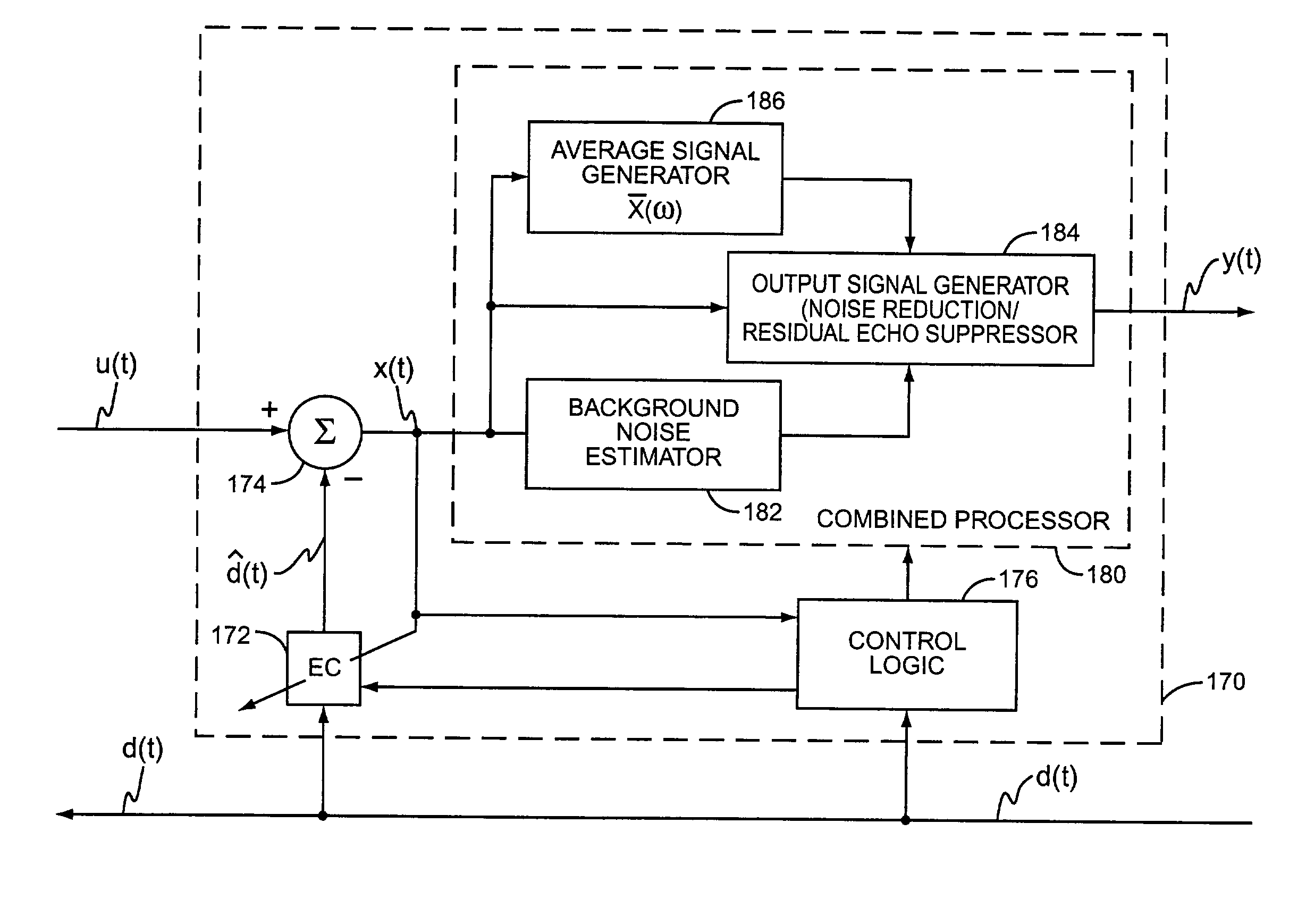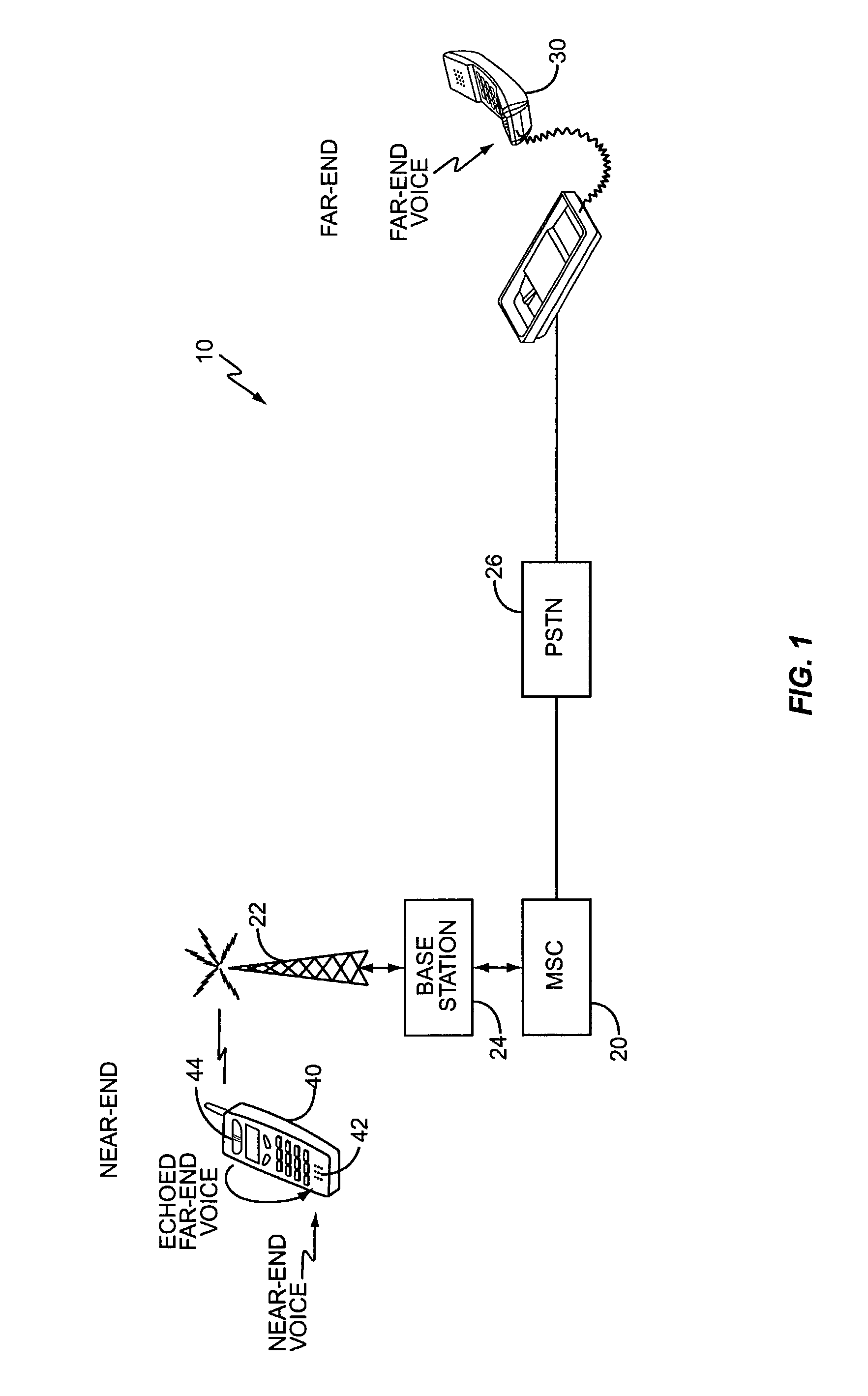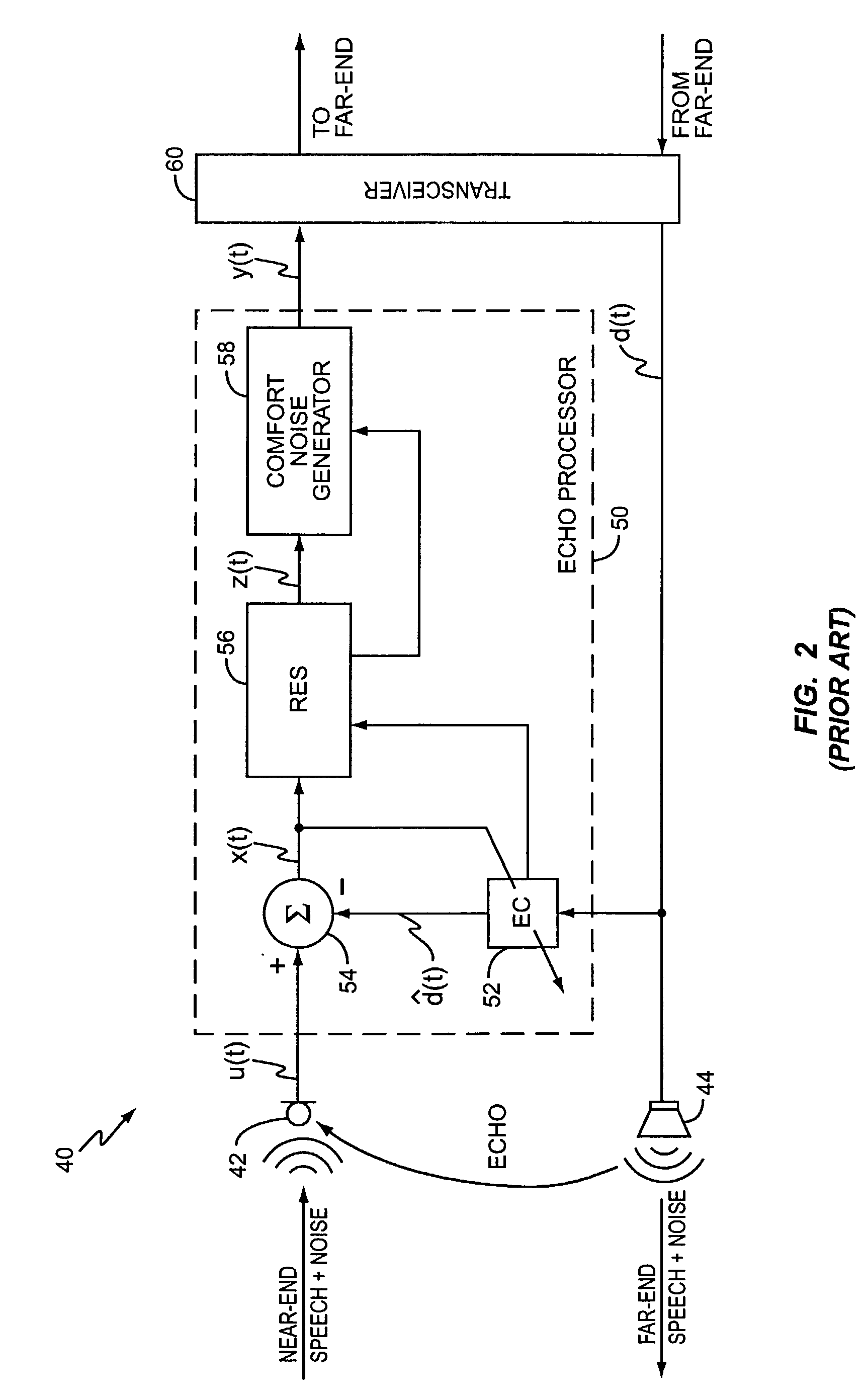Integrated noise cancellation and residual echo suppression
- Summary
- Abstract
- Description
- Claims
- Application Information
AI Technical Summary
Benefits of technology
Problems solved by technology
Method used
Image
Examples
Embodiment Construction
[0020]FIG. 1 illustrates an exemplary communications system 10 in which the echo suppression techniques of the present invention may be advantageously used. The communications system 10 includes a communications tower 22, base station 24, Mobile Switching Center 20 (MSC), and a transmission network, such as the Public Switched Telephone Network (PSTN) 26. A conventional near-end mobile terminal 40 communicates with a far-end conventional telephone handset 30 via communications system 10. The mobile terminal 40 receives and encodes a voice input from microphone 42, and transmits the voice signal to the MSC 20 via tower 22 and associated base station 24. MSC 20 further processes and transmits the received signals to a far-end conventional telephone handset 30 via PSTN 26. The telephone handset 30 outputs a facsimile of the mobile terminal user's voice based on these received signals.
[0021]Conversely, the telephone handset 30 conveys voice input from a far-end user to MSC 20 via PSTN 2...
PUM
 Login to View More
Login to View More Abstract
Description
Claims
Application Information
 Login to View More
Login to View More - R&D
- Intellectual Property
- Life Sciences
- Materials
- Tech Scout
- Unparalleled Data Quality
- Higher Quality Content
- 60% Fewer Hallucinations
Browse by: Latest US Patents, China's latest patents, Technical Efficacy Thesaurus, Application Domain, Technology Topic, Popular Technical Reports.
© 2025 PatSnap. All rights reserved.Legal|Privacy policy|Modern Slavery Act Transparency Statement|Sitemap|About US| Contact US: help@patsnap.com



